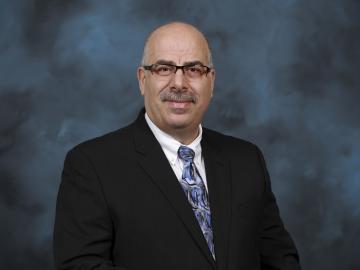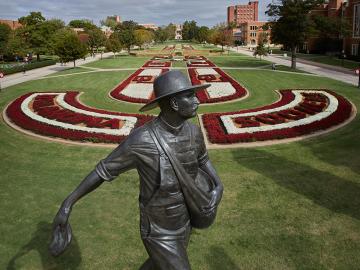Filter News
Area of Research
- (-) Fusion Energy (1)
- (-) Materials for Computing (18)
- (-) National Security (9)
- Advanced Manufacturing (8)
- Biology and Environment (37)
- Building Technologies (1)
- Clean Energy (70)
- Computational Biology (1)
- Computational Engineering (2)
- Computer Science (4)
- Electricity and Smart Grid (1)
- Fusion and Fission (15)
- Isotopes (13)
- Materials (17)
- Mathematics (1)
- Neutron Science (17)
- Nuclear Science and Technology (1)
- Quantum information Science (3)
- Sensors and Controls (1)
- Supercomputing (21)
- Transportation Systems (1)
News Topics
- 3-D Printing/Advanced Manufacturing (2)
- Artificial Intelligence (1)
- Biology (1)
- Chemical Sciences (4)
- Composites (1)
- Computer Science (5)
- Coronavirus (2)
- Cybersecurity (3)
- Energy Storage (1)
- Environment (2)
- Isotopes (1)
- Materials (6)
- Materials Science (9)
- Microscopy (3)
- Nanotechnology (4)
- National Security (6)
- Neutron Science (4)
- Nuclear Energy (1)
- Polymers (4)
- Quantum Computing (1)
- Quantum Science (3)
- Security (1)
- Sustainable Energy (2)
- Transportation (2)
Media Contacts
ORNL drone and geospatial team becomes first to map the Coca River in the Amazon basin as erosion and sediment threaten Ecuador’s lands.

Jack Orebaugh, a forensic anthropology major at the University of Tennessee, Knoxville, has a big heart for families with missing loved ones. When someone disappears in an area of dense vegetation, search and recovery efforts can be difficult, especially when a missing person’s last location is unknown. Recognizing the agony of not knowing what happened to a family or friend, Orebaugh decided to use his internship at the Department of Energy’s Oak Ridge National Laboratory to find better ways to search for lost and deceased people using cameras and drones.

Moe Khaleel has been selected to lead the National Sciences Security Directorate, or NSSD, at the Department of Energy’s Oak Ridge National Laboratory.

A discovery by Oak Ridge National Laboratory researchers may aid the design of materials that better manage heat.

Using novel data sets and computing systems, researchers at ORNL are simulating how climate change affects the safety and security of the country.

In experiment after experiment, the synthetic radioisotope actinium-225 has shown promise for targeting and attacking certain types of cancer cells.

A team of collaborators from ORNL, Google Inc., Snowflake Inc. and Ververica GmbH has tested a computing concept that could help speed up real-time processing of data that stream on mobile and other electronic devices.

Researchers at ORNL designed a novel polymer to bind and strengthen silica sand for binder jet additive manufacturing, a 3D-printing method used by industries for prototyping and part production.

A team led by the U.S. Department of Energy’s Oak Ridge National Laboratory demonstrated the viability of a “quantum entanglement witness” capable of proving the presence of entanglement between magnetic particles, or spins, in a quantum material.

ORNL and the University of Oklahoma, known as OU, recently executed a memorandum of understanding to officially recognize their partnership in pursuing shared research and development goals.




